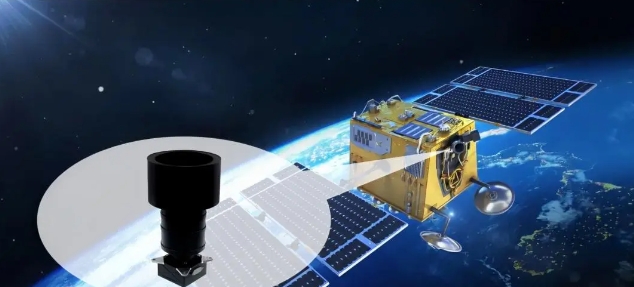As a core component of satellite navigation technology, star-sensitive sensors have been the focus of the industry as to whether they have sufficient technical content. This article will provide an in-depth analysis of the technical connotation of star-sensitive sensors and discuss their key role in the field of space technology.
Technical connotation of star-sensitive sensors

Star-sensitive sensors determine the direction and attitude of satellites by sensing starlight, providing basic data for satellite navigation and positioning. Its key technologies mainly include:
Precision optical design: The optical system of a star-sensitive sensor needs to be precisely designed to ensure efficient capture and sensing of starlight.
High-sensitivity detector: Using a high-sensitivity photoelectric detector, it can effectively convert starlight into electrical signals to ensure reliability under different environmental conditions.
Precise data processing: The data processing unit of the star-sensitive sensor needs to use advanced algorithms to accurately identify and locate star points to ensure navigation accuracy.
Performance advantages and application areas
Star-sensitive sensors excel in the field of satellite navigation with their advanced technology. Its performance advantages are mainly reflected in:
High-precision navigation: Star-sensitive sensors provide satellites with high-precision navigation and positioning capabilities, allowing satellites to accurately perform various tasks.
Strong stability: During the operation of the satellite, the star-sensitive sensor can maintain stable tracking of stars and ensure that the direction of the satellite is not disturbed by the outside world.
Multi-field applications: In addition to satellite navigation, star-sensitive sensors are widely used in fields such as earth observation, scientific research, and communication satellites.
Technological innovation and future development trends
The field of star-sensitive sensors has been continuously undergoing technological innovation to adapt to the increasingly complex space mission requirements. Future development trends mainly include:
Miniaturization and lightweight: In response to the needs of small satellites and spacecraft, star-sensitive sensors will develop in the direction of miniaturization and lightweight, improving the flexibility of the overall system.
Intelligent technology: The introduction of intelligent algorithms enables star-sensitive sensors to better adapt to the complex and changeable space environment and improve the adaptability of the system.
Multi-sensor fusion: Fusion with other sensors to improve the satellite navigation system’s perception and processing capabilities of multiple information sources.
The outstanding technical application of star-sensitive sensors is not only reflected in theory, but also demonstrates powerful performance in actual tasks. In multiple satellite projects, star-sensitive sensors have successfully realized efficient perception and positioning of starlight, providing solid technical support for the smooth execution of satellite missions. For example, in the XYZ satellite project, the high sensitivity of the star-sensitive sensor ensures that the satellite can still navigate accurately in an orbit with varying altitudes, providing reliable data for scientific research.
In order to promote the comprehensive development of satellite navigation technology, Xingsen Sensor Company actively participates in industry cooperation and the construction of a technology ecosystem. Cooperation with satellite manufacturers, navigation system operators and other related enterprises promotes technological innovation and exchange. This cooperation model not only helps the continuous upgrading of star-sensitive sensor technology, but also promotes the entire space technology industry to move towards a more mature and healthy development track.
At the forefront of space technology, star-sensitive sensors face many technical challenges, such as the impact of space radiation on optoelectronic devices and adaptation to extreme temperature changes. However, through continuous R&D investment and innovative attempts, StarSensing Sensor Company has achieved a series of technological breakthroughs in these fields, improving the reliability and stability of sensors in extreme environments.
The technical connotation of star-sensitive sensors plays an indispensable role in space technology. Its key technologies, performance advantages and future development trends all show the technological depth and foresight of the star-sensitive sensor field. As the mainstay of satellite navigation technology, star-sensitive sensors will continue to promote the continuous innovation of space technology and empower the development of global satellite navigation systems.
Send us a message,we will answer your email shortly!